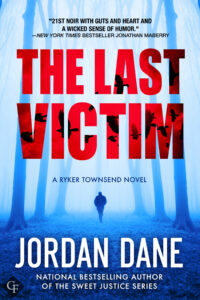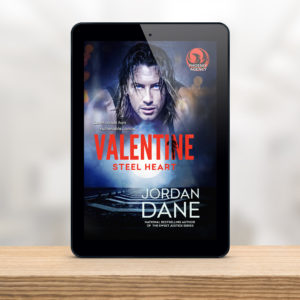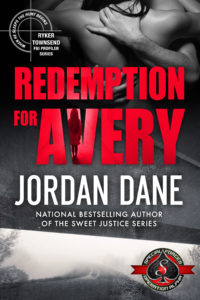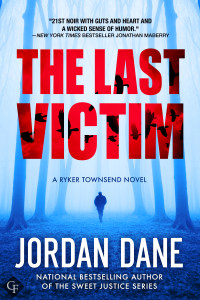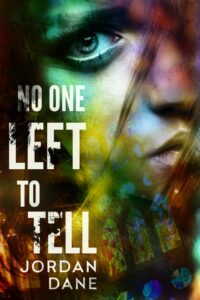
After I saw the blog title to P J Parrish’s excellent post this week (Is it Good to Open with a Bad Guy), it sparked an idea for my post today. Can a story that begins with a dead guy be worthwhile if they’re only on the page for a short scene? How can an author make a scene like that count? Or should they? How much effort should you put into one scene and a dead guy?
An author can choose to make any death be about the dead body and the unlucky stiff who finds it, or the detectives who seek justice, or the families left behind. The body can be for shock value, or be a twist in the plot of a sagging middle, but when should a victim be more?
Bottom Line – For every scene you choose to write, make every character count.
In the stories I write, I like to give a face to the dead. If I choose to open with a victim not long for this world, I have to create a vivid glimpse into their life–a quick snapshot into who they are–enough for readers to care about them. Every word and every visual has to count.
I’m not talking about TELLING the reader who the victim is. I’m talking about SHOWING their life in vivid imagery & their voice and character traits. You only have one shot to make it memorable.
In THE LAST VICTIM, I open with the murder of Nate. My psychic FBI profiler, Ryker Townsend, first “meets” Nate in a nightmare of haunting images he must decipher. As Ryker uncovers the puzzle, he must put himself into the boots of Nate to hunt his killer. Nate’s life as a young father, living on a remote island in Alaska, becomes a troubling mystery.
How could an isolated loner like Nate cross the path of a prolific serial killer known throughout the Pacific Northwest? Ryker treks into the mountains of a remote island in Alaska and as he sees more of Nate’s life, he begins to know him and grieve for his passing.
For a few reasons, I made a deliberate choice to begin THE LAST VICTIM as seen through the terrified eyes of Nate when he knows he will die. His last thoughts are of his son. I wanted the reader to care about finding this heartless killer by choosing to make the reader care about Nate.
Excerpts from THE LAST VICTIM
Beginning of the scene
The soothing murmur of an ocean ebbed through Nathan Applewhite’s mind until he felt the waves and made them real. Now as cool water lapped the sandy shore to make frothy lace at his bare feet, he looked up to a cloudless sky—the color of a robin’s egg—that stretched its reach to forever. Fragments of his senses came together. Every piece made him yearn for more. When warm skin touched his, he knew he wasn’t alone and he smiled. He held a tiny hand. His five-year old boy Tanner walked the strand of beach beside him.
The memory came to him often, but it never stayed long enough. The pain always yanked him back.
ENDING of Nate’s Life:
End of the Scene – as he’s dying
Nate blocked out the cruelty of the voice. Only one thing mattered now. As the familiar face above him blurred, it got replaced with another—the sweet smiling face of his little boy Tanner—and the rumble of a wave hitting the shore. Sunlight made Tanner squint when he looked up at him. His son let go of his hand and ran down the beach with a giggle trailing behind him.
Hey, little man. Wait up. Daddy’s coming.
With sand caked to his feet, Nathan took off running after his little boy. The two of them splashed in the waves and made shimmering diamonds with their feet. He never caught his son. Time had ticked down to its final precious seconds. He only had one way to say good-bye to Tanner. Nate watched him run and he listened to his little boy laugh until—
Pain let him go and set him free.
KEY “DEAD GUY” STEPS TO EXPLORE
1.) IMAGINE DEATH
If you choose to write through the eyes of someone who’s dying, what must that feel like? It’s hard to do. You must face your worst fears, yet try to put death into words that will be palatable to the reader (not overly graphic) with imagery that will haunt a reader. It takes thought to craft a scene that’s hard to forget for readers, but David Morrell, author of the Rambo series, did that for me when I first read FIRST BLOOD.
The first time I read a story with a scene written in the POV of someone killed was written by Morrell. I don’t want to give anything away, but a key character dies by a shot gun blast to the head. Morrell wrote it from the POV of the dead guy and I never forgot it.
My first attempt to try Morrell’s scene came when I wrote my first suspense book (the 2nd book I sold to HarperCollins). In an opening scene I wrote in NO ONE LEFT TO TELL, my assassin dies at the hands of a worse killer. His throat is cut. I researched the medical descriptions of what this must be like. After all, there is no expert in dying who is still speaking and can share their wisdom. It’s a one-way ticket.
I had to imagine his assassin’s death and make choices. Death by exsanguination (loss of blood) might be similar enough to drowning. I researched drowning symptoms to pepper them into the action. Due to the violence in the scene, I also pictured a terrified rabbit in the jaws of a wolf, bleeding out. Would a rabbit mercifully lapse into shock and not feel what would happen? I wrote that kind of “rabbit shock” for my bad guy as he died in the arms of the man who butchered him.
At the start of the scene, the assassin wants to retire and he pictures the beach of his dreams. After he makes one last score, it turns out to be one too many. He’s hunted in the dark, in a maze of others like him. When he finally confronts his killer and his throat is cut, he drowns in his blood. As he pictures “his” beach–in shock–he sinks to the bottom of the ocean fighting for breath. It made the killing easier for readers to take, but I needed to establish how cruel the villain of the book would be, so readers would fear more for my woman cop.
I’ve found these scenes can be a challenge, but one worth taking. Below is the end of the scene in Mickey’s POV.
Excerpt – NO ONE LEFT TO TELL
“You’re mine now.” The intimate whisper brushed by his ear. It shocked him. The familiarity sounded like it came from the lips of a lover. “Don’t fight me.”
For an instant, Mickey relaxed long enough to hope—maybe all this had been a mistake. Then he felt a sudden jerk.
Pain…searing pain!
Icy steel plunged into his throat, severing cartilage in its wake. A metallic taste filled his mouth. Its warmth sucked into his lungs, drowning him. Powerless, Mickey resisted the blackness with the only redemption possible. He imagined high tide with him adrift. He struggled for air, bobbing beneath the ocean surface. The sun and blue sky warped with a swirling eddy. Mercifully, sounds of surf rolling to shore clouded the fear when his body convulsed. Dizziness and a numbing chill finally seized him. The pounding of his heart drained his ability to move at all.
A muffled gurgle dominated his senses—until there was nothing.
2.) GIVE YOUR VICTIM A FACE
Even if your victim is on the page as a soon-to-be dead guy, you have a choice to show the reader who they are. Make them real or keep them as a cardboard stiff and a prop. If you paint a vivid enough picture of their life, you can show how they will be missed by their family or even how they touched the life of the cop who must investigate their death. It’s an opportunity to show violence in a different way and to thread the victim’s humanity throughout your story. It can also show the heroic qualities of your detective or your main character(s). Done right, you can make the reader feel their loss in different ways. Your story becomes more emotional.
3.) PLANT RED HERRINGS
Use the victim’s POV to plant mystery elements & red herrings for the reader to decipher. A victim’s death can serve to showcase clues on the identity of the killer (did he or she know their killer) OR the victim can be an unreliable narrator for the author to plant misdirection clues for the reader to stumble over. Milk that death scene for all its worth.
4.) DON’T WANT TO KILL IN A VICTIM’S POV?
If you’re squeamish about killing a victim and showing the reader what that feels like, you can opt out. You don’t have to stay in their POV. You can write up until the moment they die, in a dramatic adrenaline rush. Or if you switch from inside their head at the last second, you can change POVs to someone who is with them, forced to watch them die. That can milk the emotions of a scene as well.
5.) PEPPER YOUR SCENE WITH HUMANITY
A victim is leaving many people and memories behind. If you choose to make that unimportant–where they are only a corpse for the coroner to autopsy–you’ve missed out on an opportunity for emotion. All people who die leave something or someone behind – a wake where their life had been. If you make it important for your story, it will open your reader’s eyes to you as an author and it will showcase your character’s humanity.
In Mickey’s case in NO ONE LEFT TO TELL, I wanted to show his cocky attitude when he believed as a killer that he was invincible, but there is always someone worse. Mickey’s death paved the way for my villain to hit the stage.
In Nate’s case in THE LAST VICTIM, his son mattered most to him. Even in death, his boy is the only thought he had. It gave him peace. I wanted the reader–and my character, Ryker–to miss him.
Below is an excerpt that shows how I kept writing Nate into the story, long after he died. In this scene, my FBI profiler is hiking to a remote cabin in the mountains of an isolated island in Alaska where Nate lived. He’s there to understand Nate’s life to know how he crossed paths with a prolific serial killer.
Excerpt – THE LAST VICTIM
I listened to the hypnotic sounds of the forest and let the subtle noises close in. A light breeze jostled the treetops and birds flitted in the branches over my head. My boots made soft thuds on the decomposing sod under my feet. Nature had a palpable and soothing rhythm.
Nathan Applewhite had been where I stood now and I knew why he would’ve chosen to make his home on the island. There was a soul quenching refuge I sensed in my bones. I knew Applewhite must’ve felt the same. Perhaps like Henry David Thoreau, Nathan had sought the nurturing solitude of the woods because he ‘wished to live deliberately’ and get the most of his life.
Nate had chosen a quiet, simple life. The fact he was dead now—after being tortured and murdered—struck a harsh blow in me. It was an odd feeling to miss someone I’d never met, but the more I saw of Nate’s life, the greater I sensed the wake of his absence. Violent death was never fair. The haunting words of David Richard Berkowitz, Son of Sam, seeped from my brain.
I didn’t want to hurt them. I only wanted to kill them.
FOR DISCUSSION:
1.) Have you written a scene in the POV of a dying person? What challenges did you have?
2.) What authors have written scenes you will never forget and why did they stick with you? Your examples don’t have to be death scenes. (With my books in boxes from my last move, I am without examples for my posts and am forced to use MY books. Sorry about that.)
